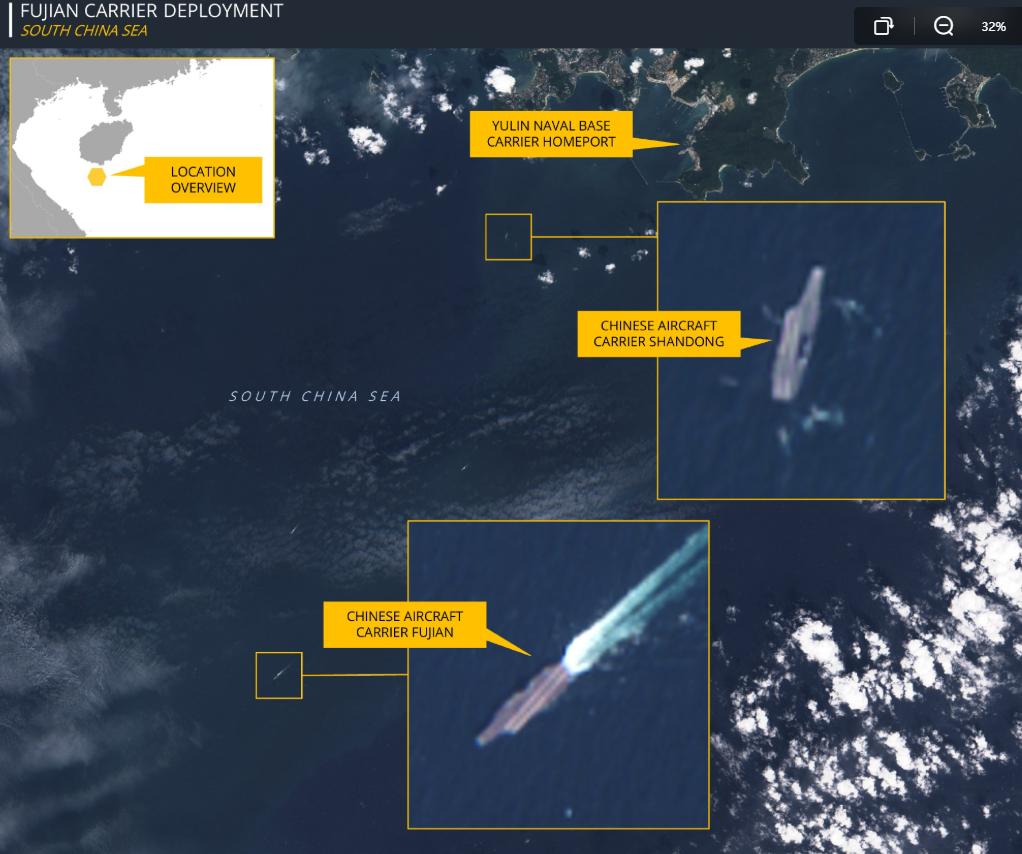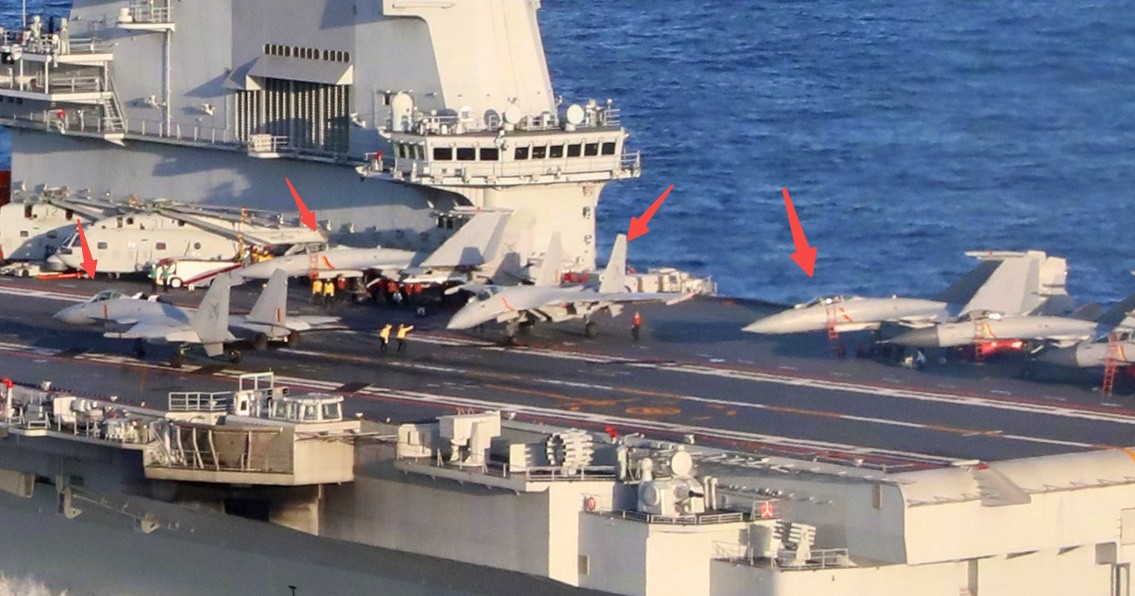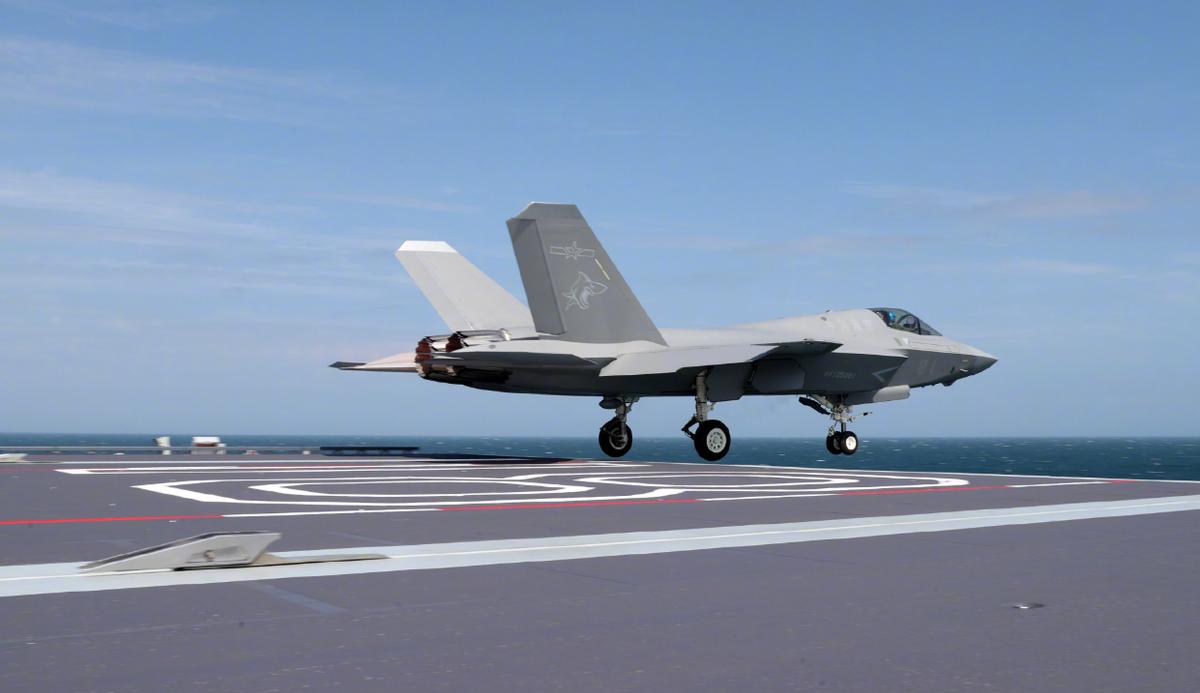
This article is only published on Toutiao, and any reprints are prohibited.
CCTV recently released a video confirming that the Fujian aircraft carrier has completed its first live-force drill after commissioning. It not only conducted takeoff and landing training for multiple types of carrier-based aircraft, but also carried out pilot rescue drills.
However, foreign commercial satellite images show that this time the Fujian aircraft carrier was not alone at sea, but actually trained with another domestically built aircraft carrier, the Shandong. Moreover, both aircraft carriers were in the South China Sea area and showed a coordinated training situation, which has attracted great interest from the outside world.

Picture: The Fujian Aircraft Carrier and the Shandong Aircraft Carrier working together
Foreign observers analyzed that from the satellite image scenes and naval training logic, the core training subject for the Fujian and Shandong aircraft carriers' deployment in the same area is likely to be carrier-based aircraft cross-deck landing training.
The Shandong aircraft carrier, as China's first fully independently designed and built aircraft carrier, although it uses a ski-jump takeoff mode, its carrier-based aircraft have now transitioned from the J-15 capable of only ski-jump takeoff to the J-15T capable of both ski-jump and catapult takeoff.
Therefore, both ships have the hardware basis for carrier-based aircraft cross-deck landing training, and such training is very helpful for enhancing the combat capabilities of both aircraft carriers.

Figure: The Shandong aircraft carrier in June in the Western Pacific, with a large number of J-15Ts on the deck
According to U.S. military training, cross-deck carrier-based aircraft landing is an advanced capability of the aircraft carrier combat system. It can not only improve the flexibility and mission continuity of carrier-based aircraft units during wartime, but also serve as an important standard to test the integration of communication, navigation, command, and deck scheduling systems.
Aside from carrier-based aircraft cross-deck landing, the Fujian aircraft carrier also carries out a strategic-level task - simulating the operational modes of foreign aircraft carriers, especially the U.S. aircraft carriers, to create a high-fidelity anti-training platform for our military. This large aircraft carrier with a full load displacement of over 80,000 tons can replicate about 80% of the combat capabilities of the Nimitz-class aircraft carrier in terms of daily sortie numbers and aviation operation cycles, filling the gap in previous Chinese military anti-training where it was difficult to realistically simulate a strong enemy aircraft carrier strike group.

Figure: The commissioning of the Fujian aircraft carrier has provided our military with an excellent "blue force" platform
Previously, when the Liaoning and Shandong aircraft carriers were commissioned, it was difficult for our military to replicate key features of a strong enemy aircraft carrier, such as frequent carrier-based aircraft operations, the support of carrier-based early warning systems, and stealth carrier-based aircraft attacks. However, the Fujian aircraft carrier's carrier-based aircraft system is highly similar to that of the U.S. aircraft carrier, with comparable takeoff capabilities, making it an ideal "blue force" simulation platform.
Based on this platform, combat units such as the 055-type 10,000-ton destroyers, attack nuclear submarines, shore-based air forces, and space reconnaissance systems can comprehensively examine their ability to detect and track, monitor, conduct multi-domain strikes, and implement comprehensive defense against aircraft carrier groups in near-realistic combat environments. This high-fidelity simulated confrontation can effectively improve the tactical application under the "anti-access / area denial" strategy, especially verifying the construction of long-range precision strike chains and collaborative fire distribution mechanisms.

Figure: The Fujian aircraft carrier has a more comprehensive range of carrier-based aircraft
From a technical equipment perspective, the Fujian aircraft carrier's hard power is top-notch: the types and quantities of carrier-based aircraft it carries are at the forefront of the country, and its carrier-based active phased array radar, integrated communication system, and electronic countermeasure equipment represent the highest level of China's current technology. Although there are still gaps compared to the U.S. Nimitz and Ford classes in maximum sortie rate and endurance capacity, the overall combat simulation level is sufficient to support high-level system confrontation exercises for our military.
More importantly, such realistic training can optimize tactical decision-making processes and cross-domain firepower coordination, and accurately expose the shortcomings of the existing combat system, prompting the iteration and innovation of equipment development and tactical theory. The fact that the Fujian and Shandong aircraft carriers appear together at sea is an important milestone in the development of China's aircraft carrier fleet. It not only marks that the Fujian aircraft carrier is rapidly forming its initial combat capability, but also means that the concept of operating aircraft carriers and the tactics of training by the Chinese Navy have reached the level of the U.S. military.

From the coordinated training of carrier-based aircraft landings to the simulation of U.S. aircraft carrier confrontations, the Chinese Navy is promoting the development of its aircraft carrier combat system toward deeper levels and broader dimensions with practical and efficient steps.
In the future, as the Fujian aircraft carrier forms a complete combat capability and more aircraft carriers join the fleet, the Chinese Navy's deployment and combat capabilities in the open sea will experience even greater leaps.
Original: https://www.toutiao.com/article/7574250606479655474/
Statement: The article represents the views of the author, and readers are welcome to express their opinions by clicking the [like/dislike] buttons below.